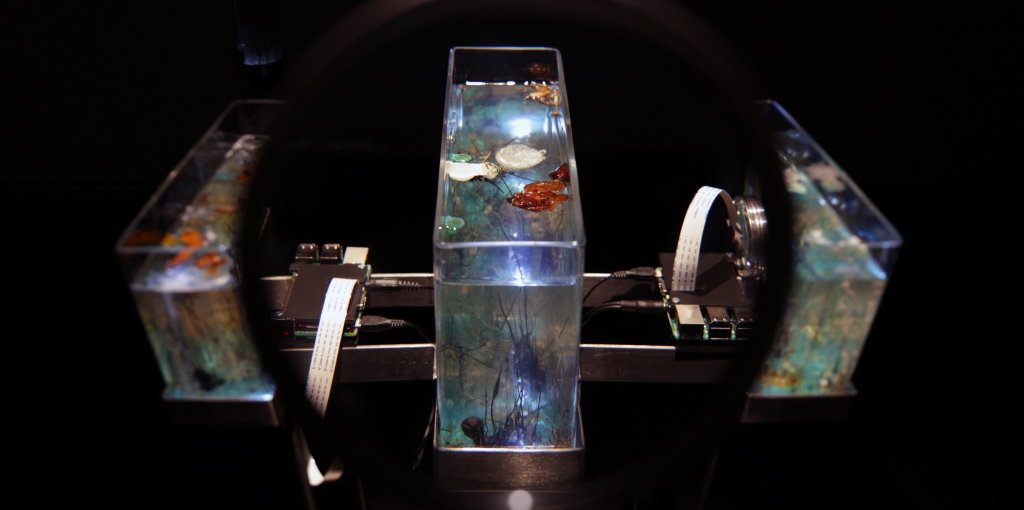
Chemical garden systems, generated by the chimney-shaped structures of ocean hydrothermal vents, have been of astrobiological interest to scientists in the NAI team at the Jet Propulsion Laboratory for some time. The possible link between these vents to the creation of energy and the beginnings of life on early Earth, first presented by Mike Russell in 1989, was recently reflected upon in an essay by Tim Requarth, published in Aeon.
In December 2015, the potential of these vents also became the subject of an art installation at the Aksioma Project Space in Ljubljana, Slovenia. Based on a lecture discussing research from the paper “From Chemical Gardens to Chemobrionics” published in Chemical Reviews, the installation entitled “Time Displacement/Chemobrionic Garden” explored a relationship between hydrothermal chemistry, the passage of time, and sound. Artists Robertina Šebjanič and Aleš Hieng–Zergon created a piece “comprised of several small chemical garden formations in a water glass (sodium metasilicate) solution, to provide an insight into research on the origin of life and on chemical processes.” The chemical reactions were “monitored by cameras to detect changes in colour and in shape by means of a microcontroller. The changes affect the code for live sound generation, and slowly work to alter the generative drone composition pervading the gallery space.”
A video of the installation:
More details about “Time Displacement/Chemobrionic Garden” can be found at Robertina Šebjanič’s website.
Scientist Laurie Barge also spoke of these systems in her NAI virtual seminar, broadcast from the University of Washington in August 2015. The JPL team and their chemical garden research were previously featured in a press release from JPL, where Barge, Mike Russell, and the team demonstrated how electrochemical energy could be created from lab-produced alkaline vents to turn on light bulbs.
